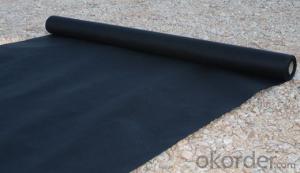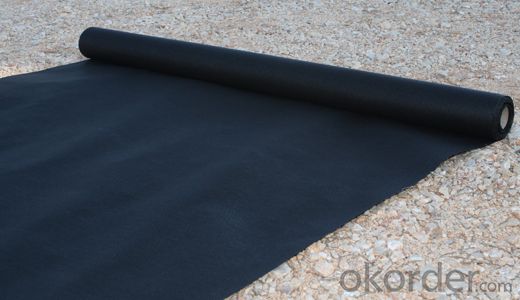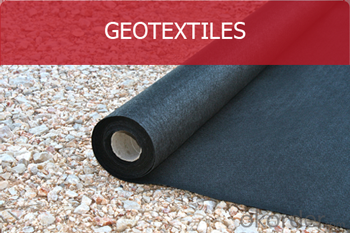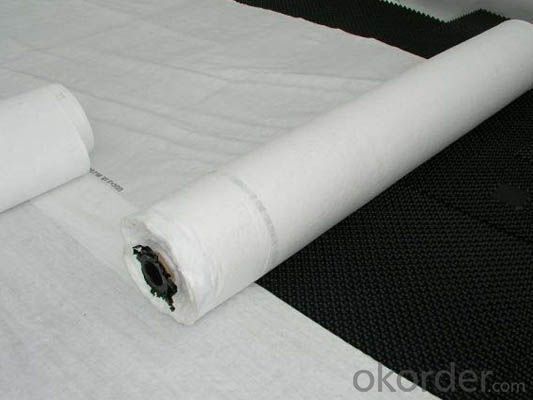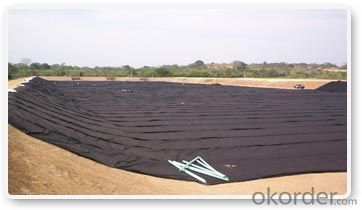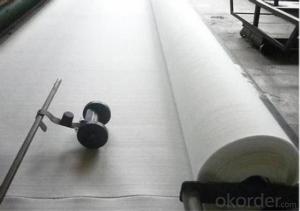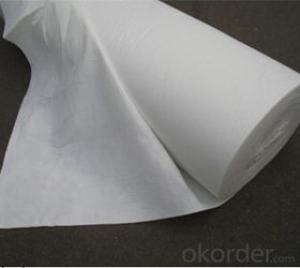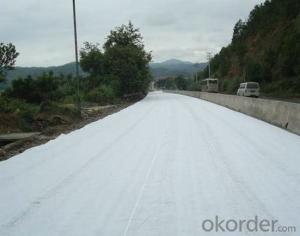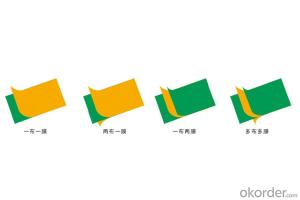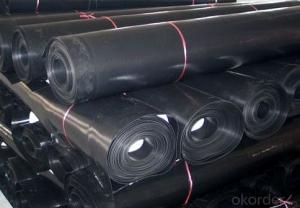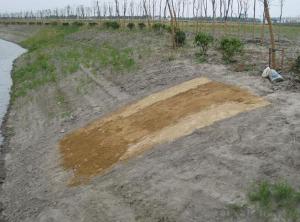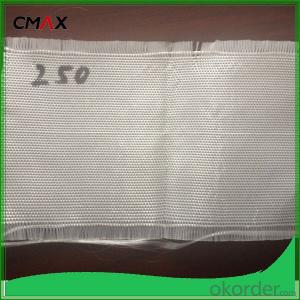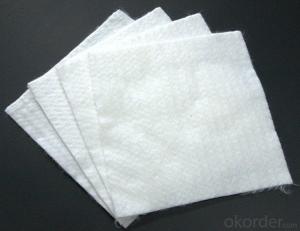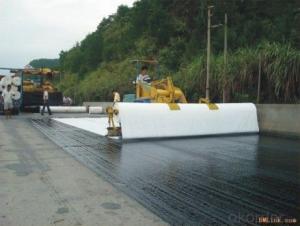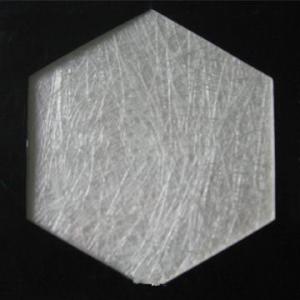Penndot Class 4 Type A Geotextile - Geotextile of PP 250g/m2 for Construccion Black Long Fiber
- Loading Port:
- Qingdao
- Payment Terms:
- TT OR LC
- Min Order Qty:
- 6000 cm²
- Supply Capability:
- 100000 cm²/month
OKorder Service Pledge
OKorder Financial Service
You Might Also Like
Geotextile of PP 250g/m2 for Construccion Black Long Fiber
Description Geotextile of PP 250g/m2 for Construccion Black Long Fiber
It is a product made from Synthetic Fibers, non biodegradable, linked together by means of Thermal and Mechanical processes. Characterised by its structure and permeable, Great tensile strength, Tear and Chemical deterioration.
Placed as basis and its main role is to prevent the passage of Fine particles at the same time allowing the passage of water within the Gabion or mat.
Features Geotextile of PP 250g/m2 for Construccion Black Long Fiber
Good tenacity
high density
loose structure
Applications Geotextile of PP 250g/m2 for Construccion Black Long Fiber
especially used in salt marshes and garbage burying field
IMages of Geotextile of PP 250g/m2 for Construccion Black Long Fiber
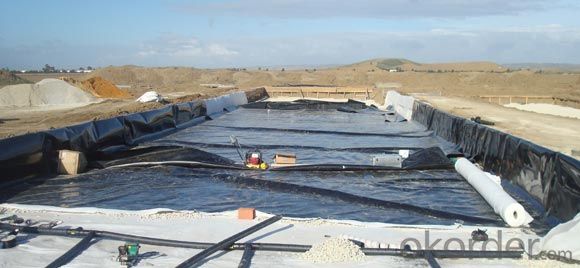
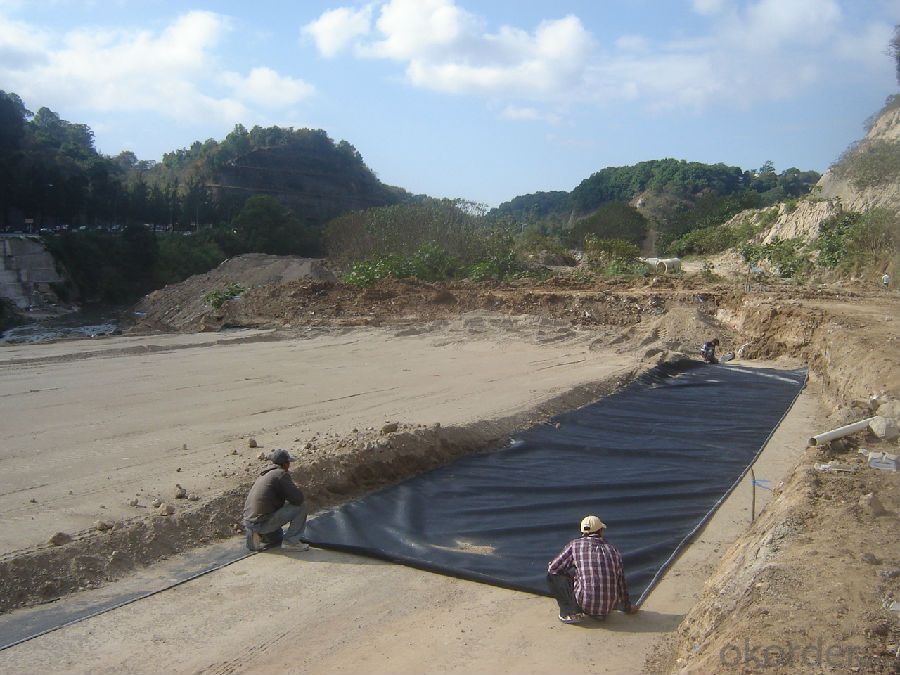
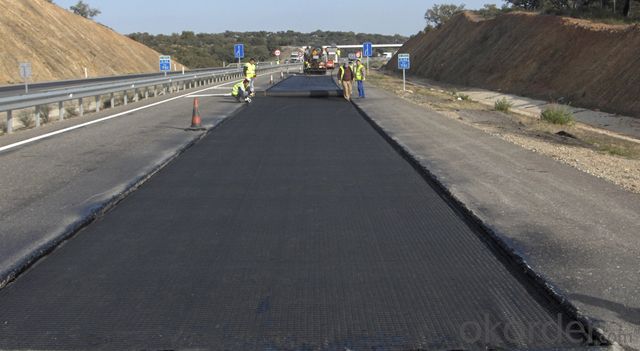
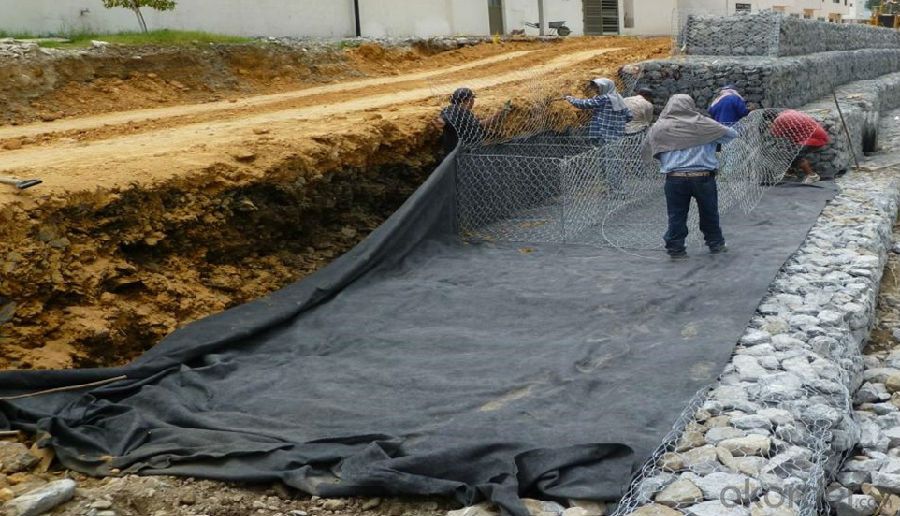
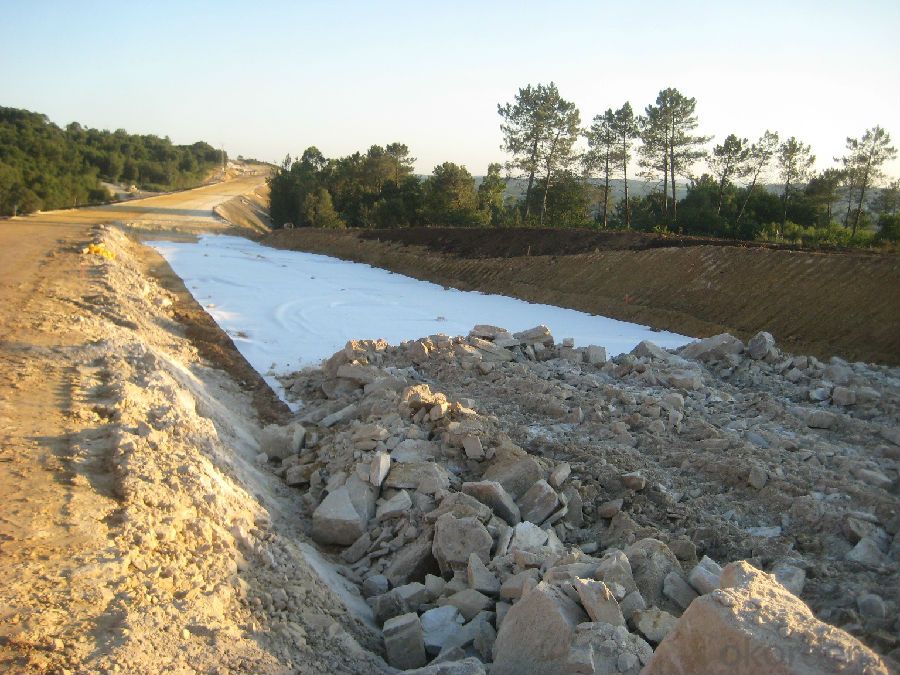
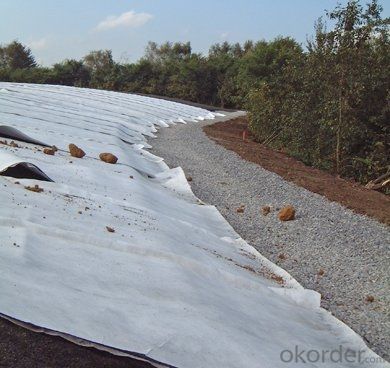
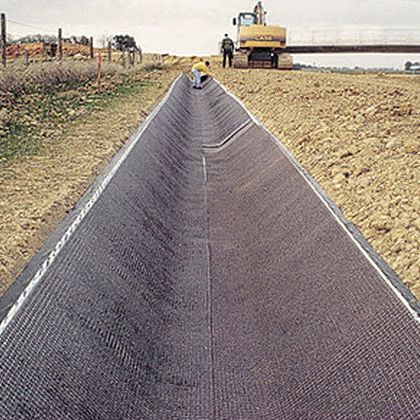
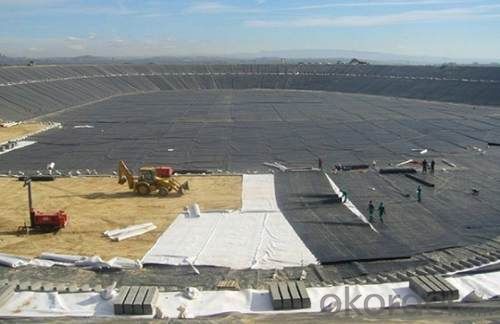
FAQ:
1. What are we supplying?
We are specialized in producing .geotextile , geocell, geogrid, geomembrane
2. How Many years experience do we have?
We have been exported to more than 15 countries in the past 14 years.
3. How long do we usually reply your request?
We always reply our customer within 24 hours.
- Q: Seepage geotextile and impervious geomembrane
- It is generally believed that the individual geotextile does not have the anti-seepage effect, the main assessment index is the permeability coefficient, the general geotextile coefficient is higher than the ordinary soil, about 0.01-0.001 look, but the geotextile and rubber, Asphalt, plastic combination will form a water-impermeable composite, anti-seepage effect increased by 10 times, and asphalt, rubber combined into a waterproofing membrane such as sbs, etc., and plastic is generally polyethylene, polyvinyl chloride, eva (standard name is Geomembrane) is a combination of impermeable geomembrane or composite geomembrane, because the composite white geotextile outside the protective effect, so the project is also called impermeable geotextile. Therefore, the two are essentially not much difference, but the argument is different. Waterproof board is also called geomembrane, customary to> 0.8mm thick geomembrane called waterproof board, & lt; 0.8mm called geomembrane, it is based on high molecular polymer as raw material made of impermeable material , Divided into homogeneous waterproof board and composite waterproof board
- Q: Can geotextiles be used for separation of different soil layers?
- Yes, geotextiles can be used for the separation of different soil layers. Geotextiles are commonly used in civil engineering and construction projects to create a barrier between different soil types or layers. They help prevent the mixing and migration of soil particles, improving the overall stability and performance of the soil structure.
- Q: What are the different geotextile installation techniques for roadways?
- There are several different geotextile installation techniques for roadways, including the overlay method, the trench method, and the sandwich method. - The overlay method involves placing the geotextile directly on top of the existing soil or subgrade before adding the new road material, such as asphalt or concrete. This technique helps to separate the soil layers and prevent the mixing of materials, providing stability and reducing the risk of road failure. - The trench method involves excavating a trench along the road alignment and placing the geotextile in the trench before backfilling it with soil or aggregate. This technique is commonly used for drainage applications, as the geotextile acts as a filter to prevent fine particles from clogging the drainage system, while allowing water to flow through. - The sandwich method is a combination of the overlay and trench methods. It involves placing a layer of geotextile between the existing soil and the new road material, as well as placing another layer of geotextile on top of the new road material. This technique provides additional reinforcement and separation, enhancing the overall performance and durability of the roadway. Overall, the choice of geotextile installation technique depends on the specific requirements and conditions of the road project, such as soil type, traffic load, and drainage needs.
- Q: Where is the geotextile in the municipal works?
- Conservation, consideration, there is more green and more Chinese geotextile material manufacturers
- Q: Roof of the geotextile
- Garage, roof green Huazhi geotextile manufacturers, solutions
- Q: What are the factors to consider when selecting geotextiles for mining applications?
- When selecting geotextiles for mining applications, several factors need to be taken into consideration. These factors include the type and characteristics of the soil or rock, the load and stress exerted on the geotextile, the required strength and durability of the geotextile, the desired filtration and drainage properties, the potential for chemical exposure or environmental degradation, and the cost-effectiveness of the geotextile solution. Additionally, the availability and accessibility of the geotextile, as well as any regulatory requirements or industry standards, should also be considered in the selection process.
- Q: What are the different geotextile specifications and standards?
- There are several geotextile specifications and standards that are commonly used in the industry. Some of the main ones include ASTM D6388, ASTM D4355, and ASTM D4491. These standards cover various aspects of geotextiles such as material properties, test methods, and installation requirements. Additionally, there are also specific specifications and standards set by various government agencies and organizations for geotextiles used in specific applications, such as road construction or erosion control. Overall, these specifications and standards help ensure the quality and performance of geotextiles in different applications.
- Q: Are geotextiles commonly used in riverbank protection applications?
- Yes, geotextiles are commonly used in riverbank protection applications. They are often employed to stabilize soil, prevent erosion, and enhance water filtration in riverbank protection projects.
- Q: How do geotextiles contribute to the performance of geosynthetic tubes?
- Geotextiles play a crucial role in enhancing the performance of geosynthetic tubes by providing reinforcement, filtration, and separation functions. They help to distribute and dissipate stress and loads, preventing the tube from deformation or failure. Geotextiles also act as a filter, allowing water to pass through while preventing soil particles from clogging the tube, maintaining its hydraulic efficiency. Additionally, they separate different materials within the tube, preventing mixing and maintaining the integrity of the structure. Overall, geotextiles significantly contribute to the durability, stability, and effectiveness of geosynthetic tubes in various applications.
- Q: Are geotextiles suitable for use in contaminated soil remediation projects?
- Yes, geotextiles are suitable for use in contaminated soil remediation projects. Geotextiles can act as a barrier to prevent the spread of contaminants, while also allowing water and air to pass through. They can be used to separate clean and contaminated soils, provide stability to slopes, and enhance the effectiveness of other remediation techniques such as phytoremediation or soil vapor extraction. Additionally, geotextiles are durable and cost-effective, making them a practical choice for soil remediation projects.
Send your message to us
Penndot Class 4 Type A Geotextile - Geotextile of PP 250g/m2 for Construccion Black Long Fiber
- Loading Port:
- Qingdao
- Payment Terms:
- TT OR LC
- Min Order Qty:
- 6000 cm²
- Supply Capability:
- 100000 cm²/month
OKorder Service Pledge
OKorder Financial Service
Similar products
Hot products
Hot Searches
Related keywords
